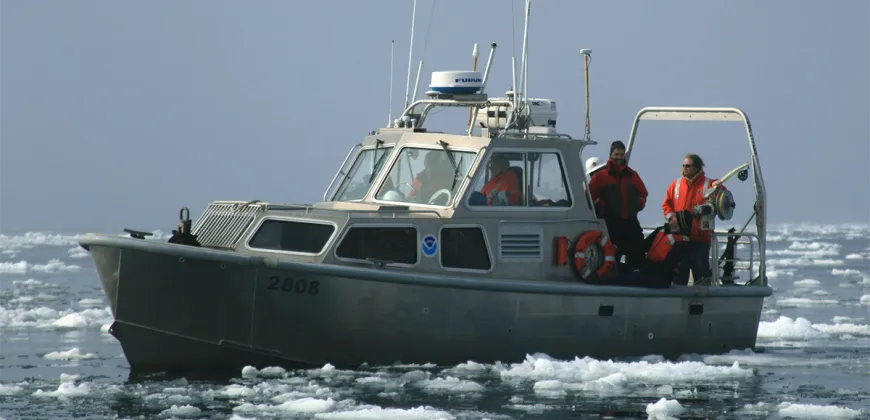Designing quieter ships to reduce noise impacts on whales

Naval Architecture and Marine Engineering: Industry Challenges
By Jon Mikkelsen, director of the MEL in Naval Architecture and Marine Engineering and Dan McGreer, adjunct professor
Cetaceans – whales, dolphins and porpoises – depend on echolocation to navigate and forage for food. In BC, the southern resident killer whale population is in decline. One of the contributing factors is underwater-radiated noise from marine vessels. Other factors include the decline in Chinook salmon stocks, their prime source of food, and environmental pollution. Studies have shown that vessel noise masks whale echolocation and makes it challenging for whales to forage, communicate with other members of their family group and rest.
Impact from underwater-radiated noise isn’t just specific to BC. Cetacean populations on Canada’s east coast are also in decline – the belugas in the Gulf of St Lawrence are listed as endangered and increased noise on the busy waterway is understood to be an important contributing factor. North Atlantic right whales are similarly affected.
Transport Canada is currently working with the International Maritime Organization to encourage the adoption of new regulations for underwater-radiated noise. The Canadian agency is taking a lead role in deepening our understanding of the issue and proposing regulations.
The Port of Vancouver is also taking action on this issue. The Port’s Enhancing Cetacean Habitat and Observation (ECHO) program has sponsored numerous studies to establish baseline noise conditions and assess how whales respond to changes in conditions (such as the size and speed of vessels). The results from this study led the Port to offer an incentive to vessels to incorporate noise reduction technologies, reducing their docking fees by almost half.
With growing concern about declining cetacean populations – and increasing levels of ship traffic – ship builders are looking for ways to design and operate vessels that reduce noise impacts. Research through UBC’s Marine Systems Initiative, for example, is evaluating various technologies and design changes that can reduce noise generated by ships.
Propeller-induced cavitation is a major contributor to underwater vessel noise and researchers are exploring modifications to propeller design to mitigate cavitation impacts. This is a difficult computational fluid dynamics problem, and we are developing methods and models to analyze and design propellers that have better cavitation characteristics yet still provide for efficient propulsion.
Propulsion engines are another major contributor to ship noise, with vibrations from the engines moving through the hull and into the water. Potential modifications include designing an engine that creates less vibration in the first place to mounting vibration insulation between the hull and the engine to reduce noise. However, this is not possible on deep sea vessels that have extremely large engines.
Since 2016, the Master of Engineering Leadership in Naval Architecture and Marine Engineering (NAME) has equipped the next generation of ship designers with the skills they’ll need to take into account multiple – and potentially competing – ship design goals.
How do you design a ship that is energy efficient and optimized for performance at higher speeds that is also innovative in terms of environmental impact, noise and safety? These are complex, multidisciplinary challenges, and the program’s technical classes provide a strong foundation in this area. The program’s integration of business and leadership courses through the UBC Sauder’s Robert H. Lee Graduate School also enables students to deepen their understanding of how to lead forward-thinking teams and projects.
Our students are keenly interested in this broader focus. Many of our students are experienced marine engineers who come to the program after working for several years at sea. They are excited to have the opportunity to gain new technical skills in the science and technology behind ship design and acquire the business and leadership skills needed to embark on the next stage of their careers as innovators in the marine sector.






